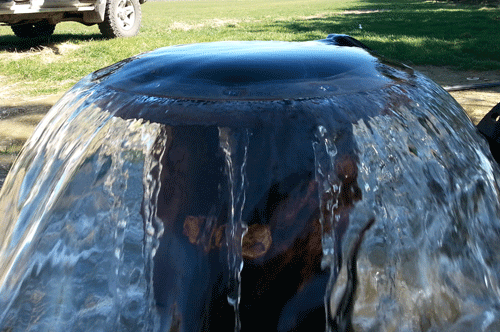Aqualinc: Artesian groundwater and liquefaction
Can deep artesian groundwater contribute to liquefaction hazard? A recent paper in Engineering Geology by Simon Cox, GNS Science, Helen Rutter, Aqualinc, and others explores the potential impacts of deep artesian groundwater under Christchurch on the liquefaction that occurred during the 2010/2011 earthquake sequence.
During the Canturbury earthquakes, groundwater discharged from fissures and eruptive centers, engulfing vehicles and undermining buildings, and flooding properties and streets. As the water recessed, drained away and evaporated, sandy-silt carried by the groundwater dried into semi-solid congealed deposits, covering streets and properties in muck, that in places exceeded half a metre thickness.
Helen says the liquefaction-induced ground damage involved a combination of subsidence, differential settlement, lateral spreading, and sediment invasion. "It damaged about 15,000 homes beyond economic repair, affected around 50,000 of the 140,000 residential properties, and damaged around half of the horizontal infrastructure - that's roads, electricity distribution, and conveyances for waste water and fresh water."
Economic losses exceeded US$21 billion, or 15% of New Zealand's GDP, making it one of the world's largest and most-complicated natural disaster insurance events.
Helen says there is a strong spatial correlation between the occurrence of ejected sediment with groundwater pressure in deep aquifers.
“We found that there was a strong spatial correlation between where there was evidence of liquefaction ejecta and high groundwater pressures in deeper aquifers. Our interpretation was that is that leakage from aquifers with artesian (above ground) pressure provided an additional driving mechanism for surface manifestation of water and sediment.
"We also recorded aquifer pressure changes, with generally an increase in water level as a result of the earthquakes. The increased pressures are broadly correlated with well depth and earthquake magnitude/distance, being largest beneath the city in wells screened in the deepest, confined coastal-zone aquifers. Artesian wells recovered to lower pressures after the earthquakes, then remained at approximately 10 kilopascals lower pressure for a few years, indicating that the earthquakes induced a loss of groundwater from deep aquifers to shallower levels.
"Mapped occurrence of ejected sediment has a strong spatial correlation with the dynamic pressure change during the Mw6.2 earthquake, such that where head increases exceeded 30 kilopascals there was over 50% surface manifestation of sand and silt. Ejected sediment was only observed where some form of positive head change was experienced."
Read the research
Cox, S., van Ballegooy, S., Rutter, H., Harte, D., Holden, C., Gulley, A., Lacrosse, V. & Manga, M. (2021). Can artesian groundwater and earthquake-induced aquifer leakage exacerbate the manifestation of liquefaction? Engineering Geology, 281, February 2021, 105982, https://doi.org/10.1016/j.enggeo.2020.105982.
Find out more about Aqualinc.
Date posted: 19 February 2021

